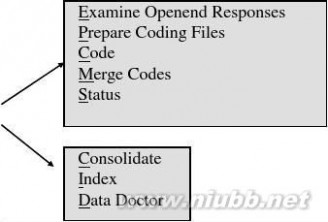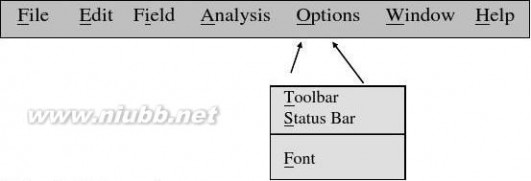一 : Lesson 29 : Buying Train Tickets
lesson 29 : buying train tickets
teaching aims(教学目标):
a. teaching aims about knowledge(知识目标):
after this lesson, students should do their utmost to know knowledge as follows:
a. mastery words
buy tickets train station
b. sentences
how much ……?
b.teaching aims about ability(能力目标):
raise students’ interests in english and they can finish the dialogue by themselves.
c.teaching aims about motion and value(情感态度、价值观目标):
the importance of practice in daily life
teaching content(教学内容): p56-57
teaching schedule(课时安排): one
teaching preparation(教学准备):
audiotape, powerpoint
teaching important points(教学重点):
a. mastery words
buy tickets train station
b. sentences
how much ……?
teaching difficult points(教学难点):
1. all of the students can say the jump, run, and walk from to
2. use from to to make up sentences.
3. make up a short dialogue and perform it.
4. the students can cooperate well with their team friends. analyses
teaching process(教学过程):
step1. warming-up and revision:
step 2.chant the “leave arrive chant .”
step 3 review how to read time. draw clocks on the blackboard and ask the class to recite the times in english.
key concepts
(donut) jump, run, walk
from to
this lesson has two groups f the key concepts. teach them together.
step 4 act out jump run and walk. then do these actions from one object to another .ask for a volunteer to do the actions from one object to another with you(let’s run/jump/walk from one to another .)then ask for volunteers to do them without you ,but as you direct . sometimes change / your directions while your volunteers are still moving between objects .
for example: www.xkb1.com
teacher: please jump from this book to that chair.
students: (begin jumping from this book to the chair)
teacher: stop! please donut jump! please walk from the book to the chair 1 use the student book and audiotape review the story so far. danny, jenny and liming have packed their suitcases. look at the pictures in the lesson with the class > what are they doing now?
step 5.play tic-tac- tic. give the students directions such as those below. note that, in english, you can say from to . or to from. both are correct, the students must listen carefully to the construction of each sentence you say.
please walk to the clock from the door.
please donut run from the chair to the window.
please jump.
divide the class into small groups. ask the groups to pretend they are going on a trip and that they are buying tickets. please read the suggestions for making up dialogues.
design of the blackboard(板书设计):
lesson 29 : buying train tickets
jump ,run ,walk
from to
homework(作业):
exercise book p57-58
teaching conclusion(教学总结):
after this lesson, students are wished to remember the mastery words and phrases. furthermore, they should practice their oral english as much as possible.
二 : Lesson29 Buying Train Tickets
lesson29 buying train tickets
课时:2
leaning aims: 1.掌握重点词汇 run,jump,walk,train station
1. 学生能读、写、说出并且运用arrive, leave,from_to_,how much____?
情感、态度和价值观目标:激发学生学习英语的兴趣和好奇心,提高他们自学的能力及自理能力。
leaning important:掌握(don’t) jump, run and walk的运用;
leaning difficult:掌握(don’t) jump, run and walk的运用;
leaning method: 情景教学法
teaching steps:
step1:organize teaching.
review lesson 28.
翻译。
1. what’s the matter?
2. 我找不到我的睡衣了。
3. 我的睡衣在哪儿呢?
4. 你能帮我找我的外套吗?
5. 我的睡衣丢了。
step2: showing the learning aims and ask the students to read them together.
step3. review some phrases.
1. from…to…
eg.how much for a ticket from xi’an to beijing?
2. train station
eg.this is a train station .
3. leave
eg. when does the train leave?
4. arrive
eg.when does the train arrive in beijing?
step4.listen to the tape,then answer some questions.
1.it’s monday morning! they are going to the _______ ________ to _______ ________.
2. how much for a ticket from shijiazhuang to beijing?
3. how many tickets do they need?
4. when does the train leave?
5. when does the train arrive in beijing?
step5.check the answers.(let the students read the answers. )
1.train station buy tickets
2.forty yuan
3.they need four.
4.at 11:15.
5.at 2:00 in the morning.
step6.learn part 2.
让学生表演跳,跑,走,出示相应的单词
jump run walk
a. give the students some examples.
1. please don’t ____.( 跑 )
2. don’t ______ ( 跳 )on the train.
3. he _____ ( 走 ) to the train.
b.let the students make some sentences.
c.fill in the blacks.( let the students discuss in pairs. )
1.jenny,my mother and i ____ ____ the train station. danny_____.
2.danny ____ ____ the train and ____ ___ .
3. _____ jump on the train.
4. the train is not ______.
5. please _____ beside the train.
step7.read the text together.then role play the text.
step8.do exercises.
a.句型转换:
1、we need train tickets.(对划线部分提问)
__________________________________
2、these are tickets.(变为单数)
_______________________________
3、i need four tickets.(变一般疑问句)
___________________________________
4、tomorrow we leave for beijing.(对划线部分提问)
_______________________________
b.用适当的单词填空:
1、please walk,don’t_____.
2、don’t ____ on the train,the train is not
ready.
3、danny and i ___to the train station.
walk run jump
step9. writing on the bb.
lesson29 buying train tickets
1. from…to…
eg.how much for a ticket from xi’an to beijing?
2. train station
eg.this is a train station .
3. leave
eg.when does the train leave?
4. arrive
eg. when does the train arrive in beijing?
5.please don’t ____.( 跑 )
6.don’t ______ ( 跳 )on the train.
7.he _____ ( 走向 ) to the train.
三 : Ci3W-Train-Chinese
china train Ci3W-Train-Chinese
MASTER 在寻找来自不同list的成员,或者经过随机化的list成员时,特别有用。[www.61k.com)在下例中,list hospital被随机化。 如果被访者不知道Grossmont 医院时,问卷会跳到感谢题。
LIST Hosp
Alvarado 医院?
El Cajon 医院?
Grossmont 医院?
ENDLIST
Q: Familiar *************************************
T: 5 1 1
请问您是否知道?
T: 10 25
1. Yes
2. No
I:

FOR NewHosp
LOC 10 2 1 HLA .5 NUM 1 2
ENDFOR
Task 10:附录 Task 上第9页
Sawtooth Windows CI3 问卷编程培训
8/7/2013 – 第 25页
china train Ci3W-Train-Chinese
第三部分
Pre-Question 部分
问卷的Pre-Question 部分在第一道题之前。(www.61k.com)
它包括:
问卷设置
默认字体设置
默认问题设置
宏
快捷键安排
预定义list
Roster 循环定义
随机化定义
问卷设置:
BEEP如果出错,发出蜂鸣声响
CATI 是否CATI问卷
COLVID 激活颜色命令
DOSEXIT ONEINT 访问结束后退出到DOS模式
MOUSE激活鼠标
COLOR (31) 指定屏幕默认颜色
FIELDCOL (31) 指定非激活区域颜色
HIGHCOL (121) 为 HLA 命令和激活区域指定颜色
SYSWIDTH (80) 按列指定屏幕
DECCHAR位小数点指定字符
THOUCHAR为千位符指定字符
ENA X 如果在x秒内没有答案,终止访问
TIMSCAL 指定记录时间的精度,在记录访问情况时用到
PREV当界面回退时,是否显示问题的答案
SQN 在访问时,在屏幕上显示题号
OPNENTER 可以用作结束开放题的输入
For Windows
NEXTBTN 显示―Next Button‖,点击―Next Button‖ 继续到下一道题 PREVBTN 显示―Previous Button‖,点击―Previous Button‖ 回到前一道题
QUITBTN 显示―Quit Button‖,点击―Quit Button‖可以退出访问
HELPBTN ) ―Help Button‖ ,点击―Help Button‖可以进入该道问题的帮助
PROGRESS 显示访问完成情况的进度
INTERNAT 改变按钮上的文本,例如将“next”改成‖下一题‖
ENDINTER
Sawtooth Windows CI3 问卷编程培训
8/7/2013 – 第 26页
china train Ci3W-Train-Chinese
DEFFONT ―FONT NAME‖ SIZE STYLE.
E.G. DEFFONT ―ARIAL‖ 12 BU
默认问题类型
您可以在Pre-Question 部分设置一个带参数的问题类型在问卷中,在问卷当中就不用在给该问题类型指定参数了
宏
您可以在Pre-Question 部分定义一组命令,并给这一组命令赋一个名字,这就是宏:
MACRO TWO
IF(ANS > 2)
IF (ANS < 8)
BEEP
REASK
ENDIF
ENDIF
ENDMACRO
接下来,在问卷当中,您可以把宏名―TWO‖ 当作命令来用。(www.61k.com)注意,除了PAUSE 类型以外,宏不能包含任何问题类型
快捷键安排 使您可以安排一些触发事件的快捷键
HELP F1 用 F1 显示帮助 (默认 OFF)
NOTE F1 用 F1来激活对话框记录访问备注(默认 OFF)
BACKUP F1 用 F1 来后退一道题(默认 ESC)
REVIEW F1 用 F1 来浏览前面的题 (默认 OFF)
RETURN F1 用F1 来回到出发点的题目(默认 OFF)
F1 只是举例说明,可以使用的快捷键如下:
CTRLA - CTRLZ
F1 - F10
HOME, END, PGUP, PGDN, ESC
另外,宏也可以通过onkey命令分配给上述快捷键
Sawtooth Windows CI3 问卷编程培训
8/7/2013 – 第 27页
china train Ci3W-Train-Chinese
MACRO Quit
SKP THANK
ENDMACRO
ONKEY F10 Quit
随机化问题顺序
假设有一些按顺序的题目,第一道是 Q1,最后一道是Q10,那么下面的命令
RAQ Q1 Q10
会以随机化的顺序来提问每个被访者
随机化问题块
假设有三组问题,第一组是Q1到Q10,第二组是Q11到Q20,第三组是Q21到Q30如果想随机的指定先问那一组,可以使用下面的命令:
RAB Q1 Q10 Q11 Q20 Q21 Q30
还可以设置更多的问题块
更改 Pre-Question 部分中的默认设置
使用SYS…ENDSYS,可以在问题部分中修改一些Pre-Question 部分中的默认设置。(www.61k.com]例如, Pre-Question 部分中“ COL WHITE ON RED ”在问题中可以作如下修改,
SYS
COL AQUA ON BLACK
ENDSYS
该道问题的屏幕颜色就被修改过来了,同时也会修改这道题以后的其他问题的屏幕颜色。
Sawtooth Windows CI3 问卷编程培训
8/7/2013 – 第 28页
china train Ci3W-Train-Chinese


其它内容 / 命令
QAL Qname

COMPLETE (CPL)
DISPOS DISPOS = VALUE

AAPOR AAPOR = VALUE

NOBACK
NORETURN
QCELL




QCELLn

CTRLEND
ENDQUEST (终止访问)
SAVEDATA
RESTART # to restart
REASK
ACA modules
china train Ci3W-Train-Chinese
APM
CBC study name
OUT program name
MDI MDO
CMDI lname “LastName”
CMDO Branch “Branchcode” 1
RANDNUM




SPLIT Split Name # of subgroups On or Off (update)
REJECT REJECT Question Name
REJECT Start Question End Question
ENDMEMB ENDROST ENDBLOCK ENDRAB
ENDRAQ
Sawtooth Windows CI3 问卷编程培训
8/7/2013 – 第 30页
china train Ci3W-Train-Chinese
BREAK

ALTERNATE ―filename‖

CONTINUE (CNA) # of seconds to question name





GET Qname
GET Qname LineNum
GET Qname StartLine EndLine
GET Qname StartLine Endline PutStartLine
PROGRESS percent
GRAPHICS ―FILENAME‖ StartLine StartColumn EndLine EndColumn GRAPHICS ―FILENAME‖ StartLine StartColumn
GRAPHICS ―FILENAME‖ 1 1 25 80
SOUND ―FILENAME‖
PLATFORM 系统变量,记录访问使用的是哪种操作系统
1. 当制作 FIELD DISKS的时候预分配
2. 在问卷当中,给系统变量RESPNUM 赋值,例 RESPNUM =
ANS 。(www.61k.com)
3. 由 CATI自动生成
Sawtooth Windows CI3 问卷编程培训
8/7/2013 – 第 31页
china train Ci3W-Train-Chinese
附录
附录 A
怎样建一个问卷 – 开始一个项目
1. 拿到一份问卷的纸板
2. 仔细的过一边问卷– 查看编程的难易程度,时间问题等。[www.61k.com)通知负责项目的人,能够完成最终问卷的估计时间
3. 在编程开始前,最好拿到问卷的最终版本。 必须要非常小心关于问卷在访问开始前的最后改动。 必须在完整的问卷测试数据测试后,才能够使用问卷
4. 开始编辑前,可以将类似问卷拷贝过来。如果可能,准备一份问卷的电子版,最好是 文本格式。
5. 从 pre-question 部分开始, 包括宏、问卷设置,快捷键分配。定义 roster 循环,预定义lists,随机化定义 可以先不写,或者使用注释避免其一开始就被执行
6. 接下来开始编辑处理题。有两道题,一道是无人接听电话情况下的处理;另一道是有人接听的处理,同时这道题也可以作为介绍题
7. 介绍和甄别部分的题目。在CATI下,可以使用 “Intro” 作为介绍题的题号
8. 甄别题。在编辑甄别题前,搞清楚各种配额的算法,再进行编程。
9. 最好的编程过程是每处理完一部分题,如2至4道,就测试一遍看是否正确。我们不建议把所有问题全部编完后,再测试
Sawtooth Windows CI3 问卷编程培训
8/7/2013 – 第 32页
china train Ci3W-Train-Chinese
10. 甄别题通常都包含很多跳问关系,但是对应的题目很可能一开始并不存在。[www.61k.com]这个时候可以先建一些空题,来完成甄别题的测试
Q: WRONGNUM
T: WRONGNUM I: KEY
11. 在甄别题完成之后,开始编辑主问卷
12. 同时可以回到 Pre-question部分,按照题目需要添加roster循环,预定义和随机化定
义等和问题直接相关的部分
13. 对于 CATI问卷,请记住在pre-question部分 CATI ON 是第一个要执行的命令
14. 在甄别题部分或者靠主问卷最近的题目,添加 QAL命令,这样系统才能开始记录数据。如果想在QAL之前 就记录数据,可以使用CMDO命令。在完成访问之后,立刻添加 CPL命令,这时系统会记录完成一份访问。
15. 完成编程后,请仔细测试,可以在CATI上进行,但不要使用练习模式。至少做两
个试访,甚至如果客户愿意参加测试的话,也是非常不错的办法。
16. 完成问卷测试以后,过一边数据,看看是否是想要的数据
17. 检查是否正确记录配额
Sawtooth Windows CI3 问卷编程培训
8/7/2013 – 第 33页
china train Ci3W-Train-Chinese
附录 B
Sawtooth CI3 for Windows 菜单




Sawtooth Windows CI3 问卷编程培训
8/7/2013 – 第 34页
china train Ci3W-Train-Chinese




Sawtooth Windows CI3 问卷编程培训
8/7/2013 – 第 35页
china train Ci3W-Train-Chinese




Sawtooth Windows CI3 问卷编程培训
8/7/2013 – 第 36页
china train Ci3W-Train-Chinese




Sawtooth Windows CI3 问卷编程培训
8/7/2013 – 第 37页
四 : Ci3W-Train-Chinese
Sawtooth Windows Ci3


问卷编写培训
 本文标题:n-train-Lesson 29 : Buying Train Tickets
本文标题:n-train-Lesson 29 : Buying Train Tickets 61阅读| 精彩专题| 最新文章| 热门文章| 苏ICP备13036349号-1